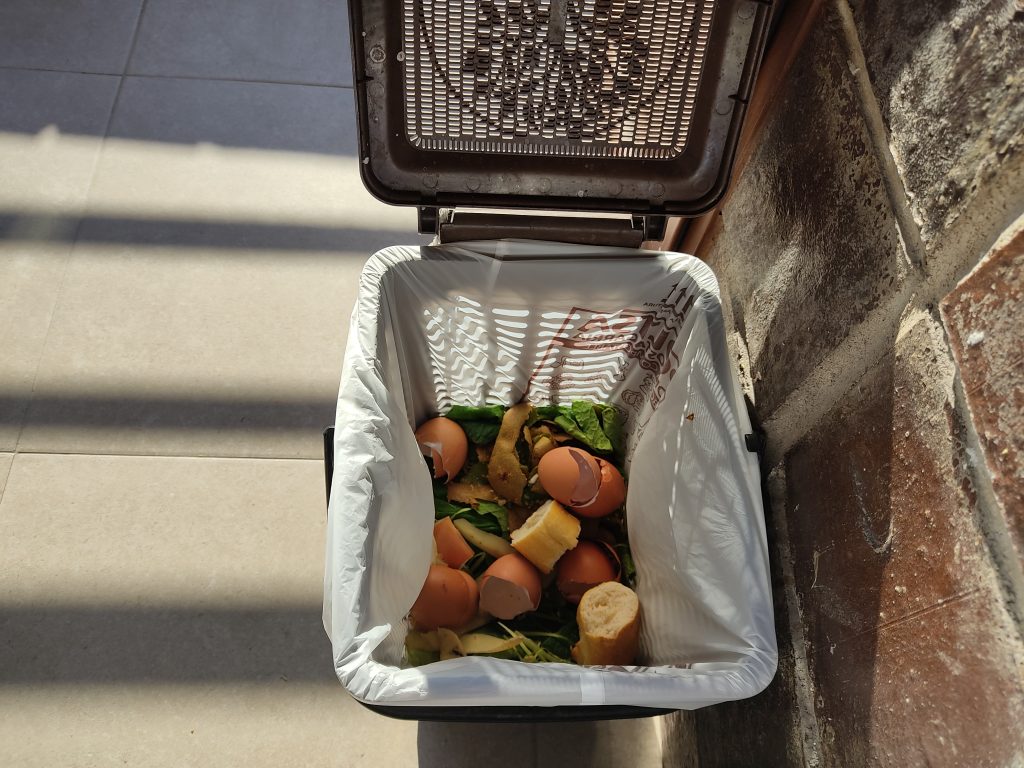
Scientists’ view of food waste generation in households: Challenges and chances when measuring household food waste
Consumers are wasting food – a lot of food! According to estimates of the EU-project FUSIONS (Stenmark et al., 2016) around 46 million tonnes of food waste occur in European households each year – but how do scientists get these data?
Measuring food waste at the household level is more difficult than at other stages of the food value chain. The main reason for this is that no other actor in the food value chain uses so many different disposal channels. Perhaps the following examples sound familiar: While solid waste usually ends up in the trash can, liquid waste tends to be disposed of down the toilet or the sink, fruits and vegetables may end up in your organic bucket, while your neighbour gives his wrinkled carrots to his guinea pigs and your colleague even composts them herself. So how is it possible to gain satisfying data, which will allow doing appropriate extrapolations for a whole country?
LOWINFOOD partners working on this tasks offer some insights on the pros and cons of common methods used:

– Direct measurements: Therefore, weight or volume are measured directly, so consumers have to collect their food waste in containers foreseen for this purpose. After a certain period, food waste amounts can be weighed and if needed sorted to gain more insights into the composition. Liquid components make sorting efforts more difficult. The spoiled food might develop unpleasant odours, this should also be considered in advance in favour of the participants (e.g. no implementation in summer months).
– Sorting analyses: Sorting analyses are suitable for estimating quantities and are mainly used when different types of waste are mixed together (e.g. organic components in residual waste) and/or to investigate the composition of food waste (avoidable – unavoidable and/or classification). They are very time consuming and costly and often food is difficult to identify e.g. flour or liquid components mixed together. Attention must also be paid to employee safety (hygiene, protective equipment). Only a few qualitative data can be collected.
– Surveys/interviews: Unlike other methods, surveys can reach large numbers of participants in a relatively short period of time and thus at a relatively low cost. Surveys are particularly useful for collecting qualitative data to develop a deeper understanding of why food is disposed of and what attitudes and habits lead to the generation of avoidable food waste. Among other things, they can also be used to get a first overview in an area that has not been studied before (e.g. waste in a certain sector) and to get a feeling for possible hotspots. It is important to keep in mind that quantity estimates may not be accurate and participants tend to give socially desirable answers.
– Diaries or other records: Diaries can be used to gather qualitative and quantitative data – interesting additional information such as storage place, duration of storage, disposal channel or reason for disposal can be easily recorded. The main challenge is to find participants willing to participate for an extended period of time (at least a week). Consumers who are willing to take part in time-consuming studies are often already wasting less food than the average. In addition, active engagement with food at home may result in less waste being generated during the study period.
Share on Facebook Share on Twitter Share on Pinterest